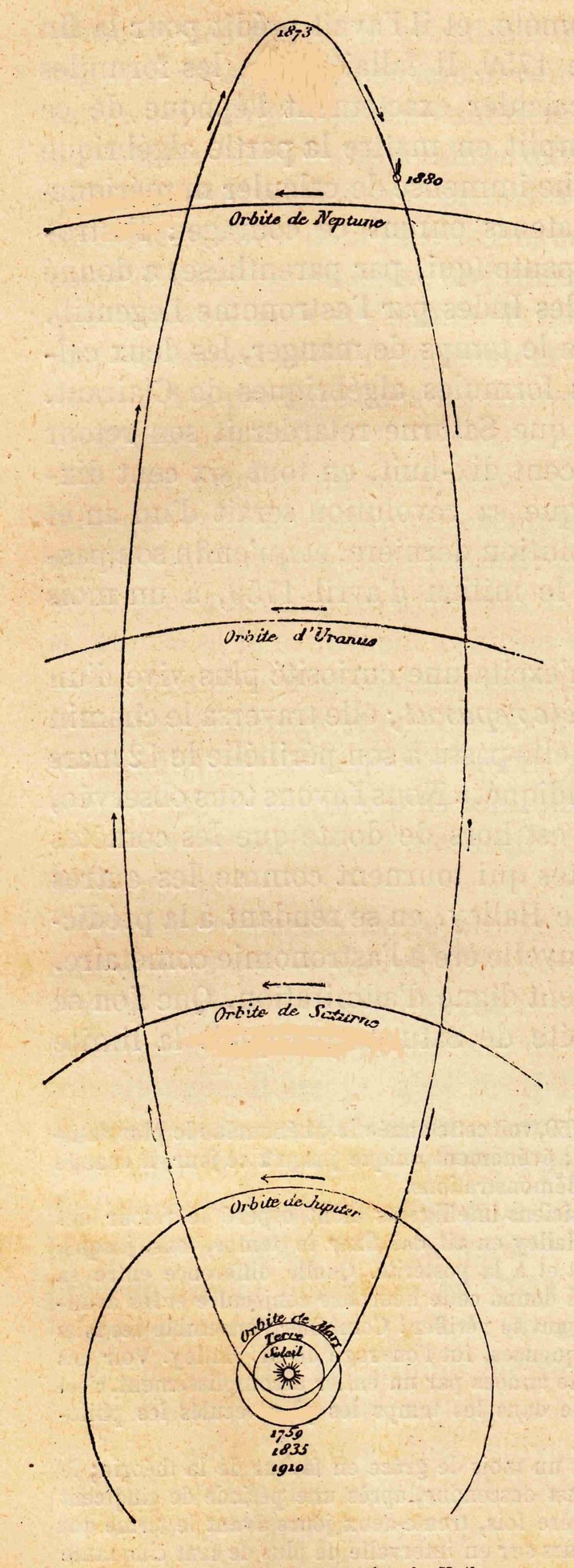From 1757, everyone eagerly awaited the return of the comet. Would it be delayed by the gravitational attraction of the planets? Halley had already estimated that the delay could be significant, and that the 1681 comet might only return in 1759. Three French scientists tried to solve Halley’s problem of gravitational perturbations: Alexis-Claude Clairaut (1713-1758), Nicole-Reine Lepaute (1723-1788) , one of the few women scientists of the time, and the young Joseph-Jérome Lefrancois de Lalande (1732-1807). The problem had not been addressed before. After “huge calculations,” they predicted a delay of 518 days due to Jupiter, plus a 100-day delay due to Saturn. So the comet would pass its perihelion (the closest point to the Sun) on 13 April 1759. Actually, its passage was on 14 March of that year, the difference being within the margin of error.
Astronomers worldwide tried to observe the comet in order to verify the predictions of Clairaut and his colleagues. The first one to have seen it, on Christmas night 1758, was an amateur astronomer living near Dresden, Johann Georg Palitzsch (1723-1788). But no one in Paris heard about this discovery. Meanwhile the Parisians were not standing still. Charles Messier (1730-1817) rediscovered the comet on 21 January 1759 and followed it until 5 February, where it came too close to the Sun to remain observable. But Messier was only the assistant of Joseph-Nicolas Delisle (1688-1768). Delisle, who wanted to be the first to report the discovery to the Academy of Sciences, imposed the secret to Messier. The other Parisian astronomers, for their part, feared the wrath of Delisle, who had a bad temper, and did not attempt to find the comet.
However, on April 1, Delisle and La Caille received a letter from Germany announcing the rediscovery of the comet by Palitzsch. Disaster! Unless completely losing face, it was no longer possible to keep the secret: Messier announced to several members of the Academy that he had seen the comet on 21 January and had also just seen it again that very night. He traced the route of the comet on a large map that he and Delisle presented to the king. The official announcement of the rediscovery by the Academy of Sciences took place only on April 25. This was very late; the comet was now very bright and easily seen. It disappeared on June 3 in the sky illuminated by the Moon, only to be seen again in 1835.
During the passage of the comet, the observations and the calculations were accurate enough that it could be seen that its orbit was not actually parabolic but elliptical, thus closed as it should be for a periodic comet.

L’orbite de la comète de Halley d’après l’Astronomie populaire / Flammarion.
Remarquer son mouvement rétrograde. Uranus et Neptune n’avaient pas encore été découverts à l’époque de Halley. La comète passe l’essentiel de son temps au-delà de l’orbite de ces planètes, où elle est inobservable. Les orbites des planètes sont à l’échelle.
Source : James Lequeux

